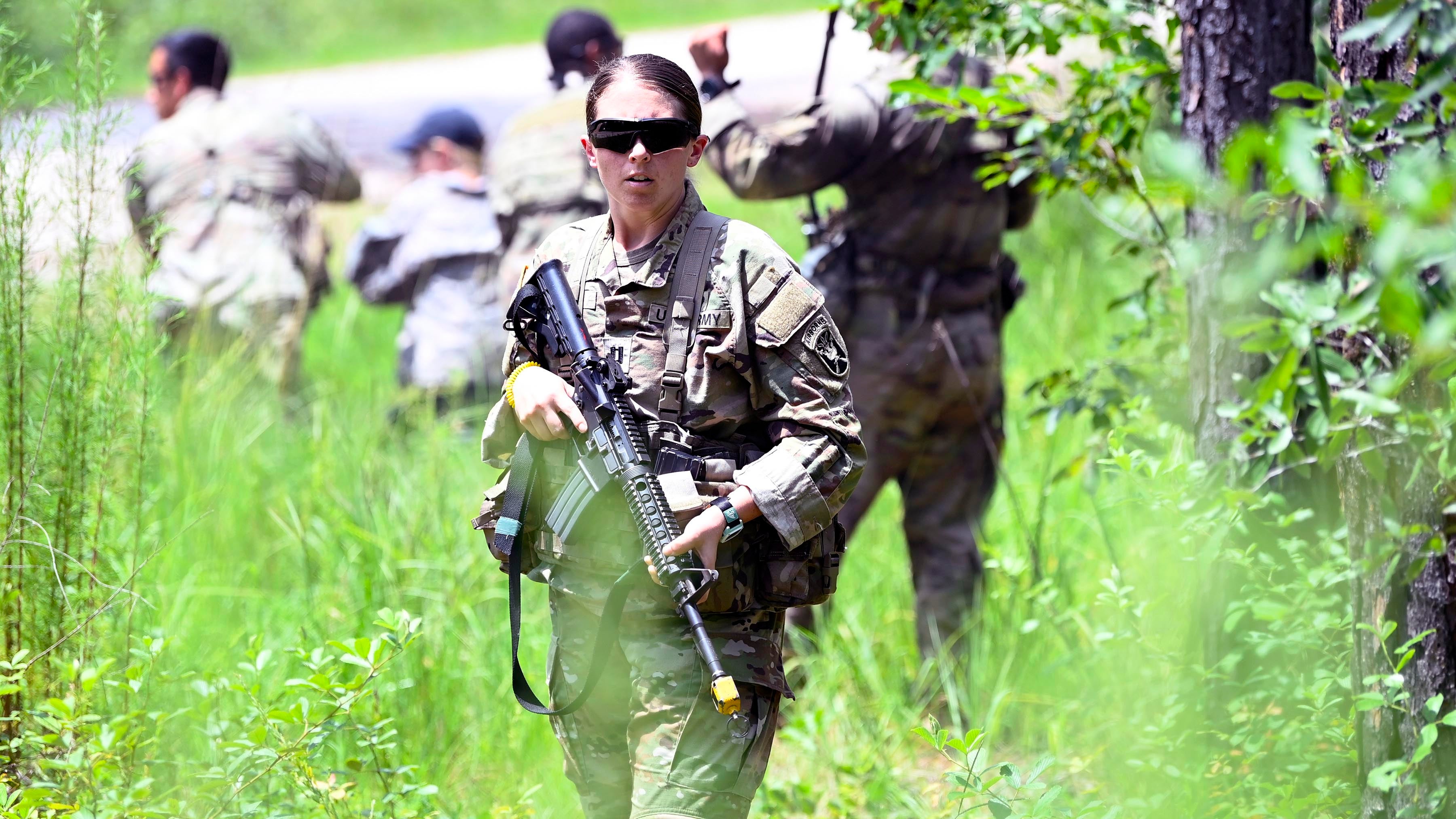USASOC Seeks to Remove Barriers for Women
USASOC Seeks to Remove Barriers for Women

After a commandwide survey found widespread gender bias and sexual harassment, Army Special Operations Command is working on dozens of initiatives to better care for the women serving in its formations.
“Humans are more important than hardware, and anything that makes the individual [special operations] operator better … that’s our solemn responsibility,” said Lt. Gen. Jonathan Braga, commander of Army Special Operations Command.
Speaking Aug. 21 during a media roundtable, Braga and other leaders from the command discussed findings from a study titled “Breaking Barriers: Women in Army Special Operations.” The goal of the study was to identify barriers female soldiers encounter in Army special operations units and “establish lessons learned and best practices to recruit, maximize comprehensive integration and retain extraordinary soldiers,” the report says.
Using a commandwide survey that received responses from more than 5,000 people, 48 focus groups featuring almost 200 soldiers, and 25 command team interviews, leaders heard from special operations soldiers and civilian employees, both men and women.
One key finding was 44% of women reported ill-fitting equipment as a challenge. “Body armor, the Advanced Combat Helmet (ACH) and the MOLLE ruck system emerged as a nearly universal concern for women, especially for those under 5’5” tall,” the report says.
To address this, the 95th Civil Affairs Brigade is leading a forum focused on fitting issues with body armor and helmets. Additionally, Program Executive Office Soldier provided the command with an overview of the new Modular Scalable Vest, “which appears to be a suitable solution for the majority of the body armor related concerns identified in this study,” the study says.
Other issues include gender bias, access to child care, social support, sexual harassment, morale and well-being, pregnancy and post-partum care, and overall quality of life.
“Gender bias and sexism are manifesting in a variety of ways as 40 percent of women service members reported Gender Bias in the Workplace as a challenge,” the study says. “The research team captured a significant number of overtly sexist comments from male service members primarily focused on an aversion to females entering the 18 series [Special Forces] career field.”
Access to child care is another stressor, with 44% of women and 70% of men in the command having at least one child, the study says. Primary concerns include off-post child care costs and availability of care on-post, the study says.
For women, social support among peers and leadership was another top challenge, the study says. “A prevailing sense of loneliness emerged when discussing social support, particularly regarding deployments, friendship, family planning, and access to women’s healthcare,” the study says.
Another top concern was sexual harassment, which the study called a “ubiquitous concern.” As many as 30% of female soldiers reported sexual harassment as a challenge, according to the survey. “However, during focus group discussions, most women were shocked by this percentage as the common sentiment was that the percentage ‘should’ have been closer to 90 or 95 percent,” the study says.
Since the study was published in December 2021, Army Special Operations Command has worked to implement 42 recommendations, including more education and awareness, creating a mentorship program for junior soldiers and pursuing better fitting combat equipment for women or soldiers with smaller statures.
The command also is educating leaders on resources for sexual assault and sexual harassment prevention, developing a dating etiquette course to educate junior leaders on healthy dating behaviors, conducting a commandwide barracks assessment and exploring programs for single parents and unmarried soldiers.
There also are efforts to conduct seminars on health and nutrition and take a closer look at how women soldiers are trained. “This recognizes the anatomical differences and physiological differences of our female warfighters,” said Lt. Col. Rachel Cepis, director of the command’s Women in ARSOF initiative.
Based on those differences, women may need to train differently to prevent injury or maximize their performance, Cepis said. “This initiative is not about changing or lowering any standards,” she said. “It’s about maximizing the talents of our people.”
Command Sgt. Maj. JoAnn Naumann, senior enlisted leader for Army Special Operations Command and the first woman in the job, agreed. “This study is not about accommodations for women,” she said. “It’s about providing tools to allow women to maximize their performance and continue to serve.”
The survey and the resulting recommendations are just the start, Braga said. “We like to pride ourselves on having an organization based on radical candor and feedback,” he said. “This is not the end of the journey. We have a long way to go. Changing culture takes time. … We have to be better. We must be better because our nation depends on it.”

